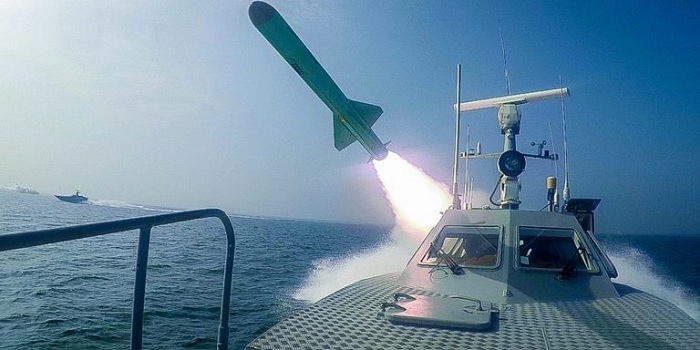
Iran’s ‘Great Prophet’ military exercises recently caused U.S. forces in the Persian Gulf to briefly go on high alert.
The recent high alert suggests that U.S. forces take the threat from Iran seriously, despite the Trump administration’s claims that U.S. sanctions are hindering Iran’s military capabilities.
In concert with recent military exercises, Iran’s Islamic Revolutionary Guard Corps claimed that its Noor surveillance satellite is operational and it launched ballistic missiles from hardened underground silos.
The Trump administration cites the Iranian military activity to further its thus far unsuccessful effort to extend the U.N. ban on arms transfers to Iran, which expires in October.
In late July, Iran launched its week-long ‘Great Prophet 14’ air, sea, and land military drills, accompanied by additional activities designed to showcase Iran’s advancements in its military technology capabilities. The main event of the exercises consisted of missile, direct-fire, and helicopter-borne commando attacks on a mock-up of the U.S. Nimitz-class aircraft carriers that the U.S. Navy deploys to the Persian Gulf. Although some sources noted that the practice attacks on the carrier were not fully successful, Iran’s firing of ballistic missiles at the model carrier caused U.S. forces at two Gulf bases to go on ‘high alert’ and briefly take shelter. The two bases – Al Dhafra Air Base in the United Arab Emirates (UAE) and Al Udeid Air Base in Qatar (the largest air base used by U.S. forces in the region) – host a total of about 13,000 U.S. Air Force personnel. Forces deployed at those bases constitute the core of U.S. power projection capability in the region. During the period of heightened tensions with Iran in mid-2019, the United States deployed to Al Dhafra the F-35 Joint Strike Fighter, although it is not known if that aircraft was there during the high alert warning. The alert at the two bases indicates that the United States has significant respect for Iran’s missile capability in light of Iran’s retaliatory strike on Ayn al-Asad base in Iraq in January 2020 missile retaliation. That strike, which destroyed several buildings on the base and caused traumatic brain injury to hundreds of U.S. forces there, was in response to the early January U.S. strike that killed IRGC-Qods Force commander Qasem Soleimani outside Baghdad airport.
Potentially even more significant to U.S. estimates of Iranian strategic strength were Iranian announcements and claims that coincided with the exercises. During the course of the drills, Iran released detailed, overhead photographs of the Al Udeid Air Base that it claimed were taken by the Noor imaging satellite that the IRGC launched in April 2020. At that time, the U.S. military publicly assessed the Noor as a ‘tumbling webcam in space,’ indicating that it was not operational, and some sources claim that the Iranian photos of Al Udeid were not from the Noor but were instead commercially available photos. However, if the Iranian satellite photos were taken by the Noor, then Iran is in possession of a capability to closely monitor U.S. regional troop movements and U.S. force protection measures.
At the end of its week of drills, Iran compounded U.S. concerns by displaying IRGC footage of its ballistic missiles being fired from underground silos in the desert of central Iran. The IRGC purported to show some of the missiles striking a model of the U.S. Terminal High Altitude Area Defense (THAAD) system, which protects installations where U.S. forces operate throughout the Gulf. The key message of the footage was to portray that the IRGC now has the ability to bury its missile force in hard and deeply buried targets that would require potent bombardment to destroy, and it remains far from a guarantee that they would be destroyed.
Iran’s displays of military hardware and related capabilities during the Great Prophet 14 exercises reinforce the view of many U.S. national security experts that Iran is emerging as a formidable strategic adversary. Yet, Iran’s boasts might assist the Trump administration’s effort to persuade its European allies to extend the U.N. ban on arms transfers to and from Iran, which is scheduled to expire on October 18. The Trump administration has made little progress, to date, in building support on the U.N. Security Council to extend the embargo or convincing Russia or China not to use their respective Security Council vetoes to block an extension. But, with the deadline to extend the embargo winding down, the Great Prophet drills might help the Trump administration argue that the expiration of the embargo will compound the strategic threat from Iran by enabling it to buy new long-range combat aircraft, tanks, submarines, and naval craft. Even if it fails to achieve an extension of the U.N. ban, the Trump administration might be able to engineer a compromise under which Russia, China, or other arms manufacturers agree to voluntary restraints on the sales of certain new hardware to Iran.
 Eurasia Press & News
Eurasia Press & News


